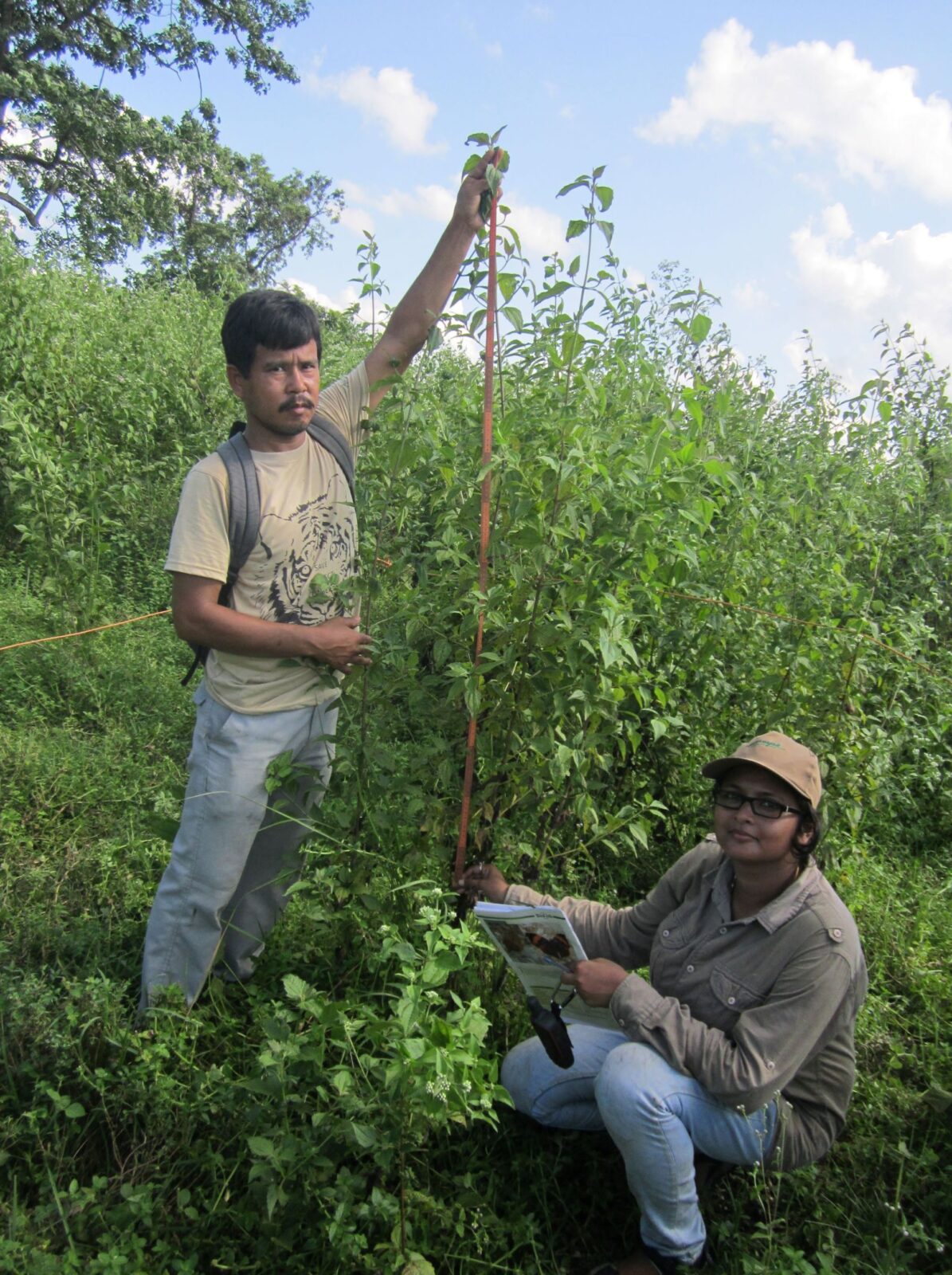Research on control efficacy of Chromolaena odorata is rare worldwide. Given the species’ impact on internationally recognized protected areas, such research is important. Management method to control invasion and promote grassland recovery is poorly studied, particularly of C. odorata. In the present study, we test the efficacies of different management methods- manual uprooting, cutting, and cutting and burning of C. odorata plants to restore native grassland habitat in the sub-Himalayan grassland ecosystem in Manas National Park. We conducted experiments in three 1-ha plots, each plot was subjected to different treatments, where we monitored the recovery of native grass species. Based on our experiment we found that the species richness, density and cover of native grasses increased significantly by the third year (t2) in the manually uprooted treatment site compared to other two treatments; while the density and cover of C. odorata decreased. Our data highlight the efficacy of the manual uprooting treatment in reviving the grassland habitat. It is an ecologically-effective strategy as it can restore the entire native grass-community if maintained and monitored for at least three to five years. However, we caution that manually uprooting the C. odorata and reviving natural grass-communities requires long-term investment of resources and time. With this tried and tested management methodwe have reduced invasion by approximately 95% in the selected prime grassland habitat of around 5 km2 area in the central and eastern ranges of the Park in subsequent years. We have encouraged the use of C. odorata as natural dyeing agent among the local communities, as a complementary control action. The findings of the study will aid the forest managers to devise a comprehensive and pragmatic invasive species management plan in order to ensure long-term conservation of grassland habitat and its dependent species.
Understanding the efficacy of different techniques to manage Chromolaena odorata L., an Invasive Alien Plant in the sub-Himalayan tall grasslands: Toward grassland recovery
Alolika Sinha

Read the full article/publication on: https://www.sciencedirect.com/science/article/abs/pii/S0925857422000799
